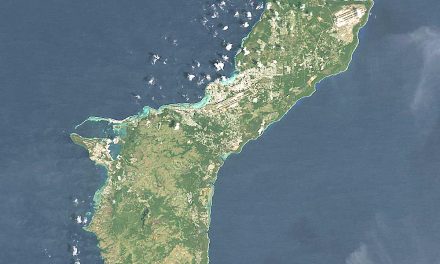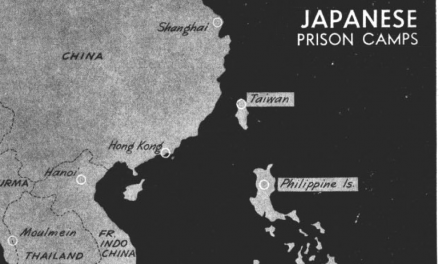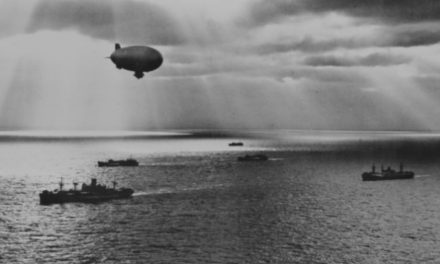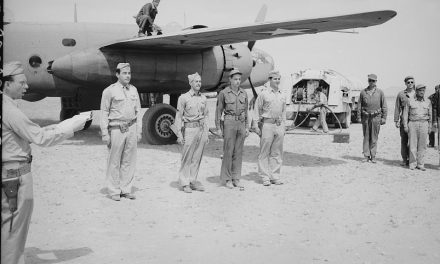In the first land offensive of the war by American forces, Marines overtook several small Solomon Islands. The islands, sometimes referred to as the southern outposts of the Japanese empire, have been held by American troops against many Japanese attempts to retake the land.
The initial US attack on the Solomon Islands took place in the early morning hours of August 7, coming as a complete surprise to Japanese forces stationed on the islands. While the Marines prepared to land, carrier-based planes attacked enemy positions and waiting warships used their large guns to clear the area for the arriving American troops.
The Marines were able to easily destroy 18 enemy seaplanes and an enemy schooner immediately after beginning their attack. The element of surprise has been heralded as the key to the American victories, with some reports coming in from the islands that after the initial wave of attacks, Marines found mess halls set up for breakfast with bowls left half-eaten by the ambushed Japanese forces.
With Marine ground forces dispatched across the islands, carrier-based planes made calculated attacks on Japanese shore batteries, supply stations, and areas of concentrated troop activity. The fighting continued well into the night of August 7, with the US ultimately taking control of several islands from Japanese forces.
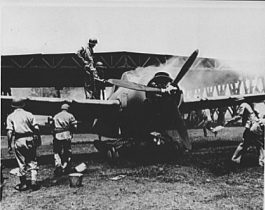
Marines on Guadalcanal, in the Solomon Islands, extinguish a fire on a fighter plane after a Japanese bomb hit the hangar shown in the background. The plane was not seriously damaged. (Library of Congress)
Navy officials have not released the names of the islands that are under US control, but they have announced that they are in the Guadalcanal-Tulagi area. The Japanese appear to still be in firm control of the islands in the northeast, while the U.S. holds several islands in the southeast.
Since US control of the islands was established, Japanese forces have made many attempts at retaking this territory. The most noteworthy of these counter-strikes occurred throughout the days of August 9-11, all resulting in further loss and damage to Japanese forces, including grave losses to their navy.
Small numbers of troops have since been sent to the islands in an attempt to recapture some of the land but US forces have easily defeated or captured the battered Japanese men whenever they have arrived on one of the captured islands. Marines now are engaged in a “mopping up” effort, with troops mainly dispatched to deal with the few remaining Japanese soldiers.
Looking to the future, Senator Joseph Tydings of Maryland said in a radio broadcast that these victories are the first step in the right direction for the US in an attempt to overthrow Japan. Tydings is a second ranking member of the Senate Naval Affairs Committee.
Sen. Tydings’ statement reflects the attitude across the country that the tides of war are turning in favor of the Allied forces. This renewed optimism has been apparent since the US Navy’s resounding victory at the Battle of Midway in June. The success of the initial assault on the Solomon Islands illustrates the shift in the American position, from warding off attacks and remaining on the defensive to actively delivering blows to the enemy.
Nelson A. Rockefeller, coordinator of inter-American affairs, spoke about the importance of positive reports from the Solomons in relation to the war as a whole, saying, “None of us can hear this news – including Hitler – without realizing that this is one of the most important developments in the march of the free peoples for victory.”
Sources
- “Capture of Solomon Islands Real Step to Victory – Tydings” The Washington Post, August 24, 1942, p. 19.
- Peters, C. Brooks. “Japanese Destroyer Sunk, 2 Others Hit in Solomons: ENEMY DESTROYER SUNK IN SOLOMONS” New York Times, August 30, 1942, p. 1.
- Tregaskis, Richard. “Marines Literally Blasted Japs Loose From Solomon Islands: Witness Tells How Marines Took Islands” The Washington Post, August 19, 1942, p. 1.
- Norris, John G. “All Solomons Goals Taken, Navy Declares: Battle Virtually Over; Marines ‘Mopping Up’ Remnants of Enemy All Solomons Goals Taken, Navy Says” The Washington Post, August 21, 1942, p. 1.
- “MacArthur’s Airmen Pound Foe: ACTIVITY FLARES IN SOLOMON ISLANDS MARINES MEET FOE IN SOLOMON ISLES” New York Times, September 4, 1942, p. 1.
- “Solomon Islands Spoils” Life, September 14, 1942, p. 34.


